Note
Click here to download the full example code
Using external samples easily¶
emcee, arviz, and numpyro are all popular MCMC packages. ChainConsumer
provides class methods to turn results from these packages into chains efficiently.
If you want to request support for another type of chain, please open a discussion with a code example, and we can add it in. The brave may even provide a PR!
import arviz as az
import emcee
import numpy as np
import numpyro
import numpyro.distributions as dist
from jax import random
from numpyro.infer import MCMC, NUTS
from scipy.stats import norm
from chainconsumer import Chain, ChainConsumer
Emcee¶
Let's make a dummy model here.
# Of course, your code is probably a bit more complex
def run_emcee_mcmc(n_steps, n_walkers):
rng = np.random.default_rng(42)
observed_data = rng.normal(loc=1, scale=1, size=100)
def log_likelihood(theta, data):
mu, log_sigma = theta
return np.sum(norm.logpdf(data, mu, np.exp(log_sigma)))
def log_prior(theta):
mu, log_sigma = theta
if -10 < mu < 10 and -10 < log_sigma < 10:
return 0.0
return -np.inf
def log_probability(theta, data):
lp = log_prior(theta)
if not np.isfinite(lp):
return -np.inf
return lp + log_likelihood(theta, data)
ndim = 2
p0 = rng.uniform(low=0, high=1, size=(n_walkers, ndim))
sampler = emcee.EnsembleSampler(n_walkers, ndim, log_probability, args=(observed_data,))
sampler.run_mcmc(p0, n_steps, progress=False)
return sampler
sampler = run_emcee_mcmc(8000, 16)
params = [r"$\mu$", r"$\log(\sigma)$"]
chain = Chain.from_emcee(sampler, params, "an emcee chain", discard=200, thin=2, color="indigo")
consumer = ChainConsumer().add_chain(chain)
Let's plot the walks to make sure we've discard enough burn-in
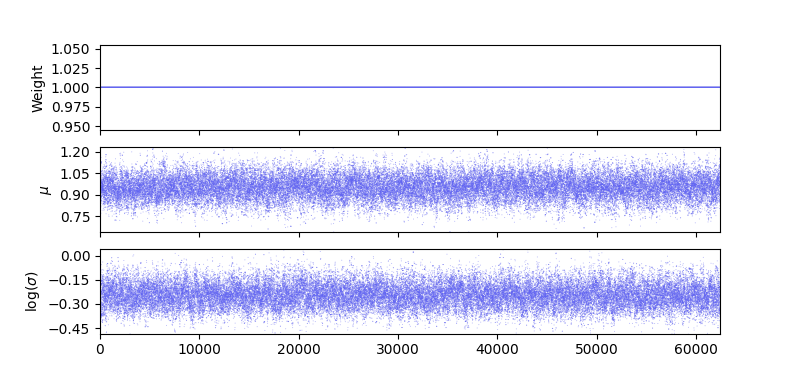
And then show the contours themselves
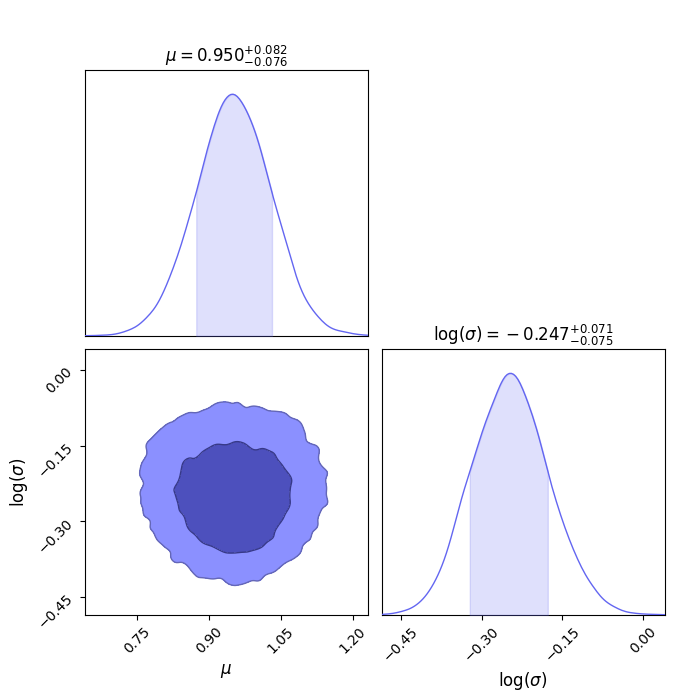
Numpyro¶
Let's start with numpyro. Again, let's make a dummy model we can sample from.
def run_numpyro_mcmc(n_steps, n_chains):
rng = np.random.default_rng(42)
observed_data = rng.normal(loc=0, scale=1, size=100)
def model(data):
# Prior
mu = numpyro.sample("mu", dist.Normal(0, 10))
sigma = numpyro.sample("sigma", dist.HalfNormal(10))
# Likelihood
with numpyro.plate("data", size=len(data)):
numpyro.sample("obs", dist.Normal(mu, sigma), obs=data) # type: ignore
# Running MCMC
kernel = NUTS(model)
mcmc = MCMC(kernel, num_warmup=500, num_samples=n_steps, num_chains=n_chains, progress_bar=False)
rng_key = random.PRNGKey(0)
mcmc.run(rng_key, data=observed_data)
return mcmc
mcmc = run_numpyro_mcmc(8000, 1)
chain = Chain.from_numpyro(mcmc, "numpyro chain", color="teal")
consumer = ChainConsumer().add_chain(chain)
Let's plot the walks to make sure we've discard enough burn-in
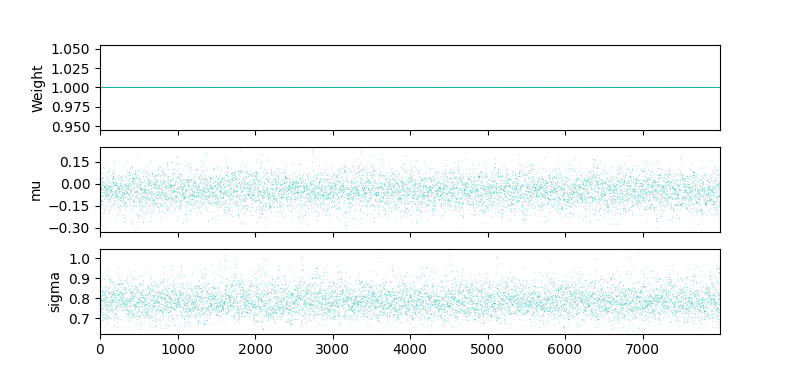
And then show the contours themselves
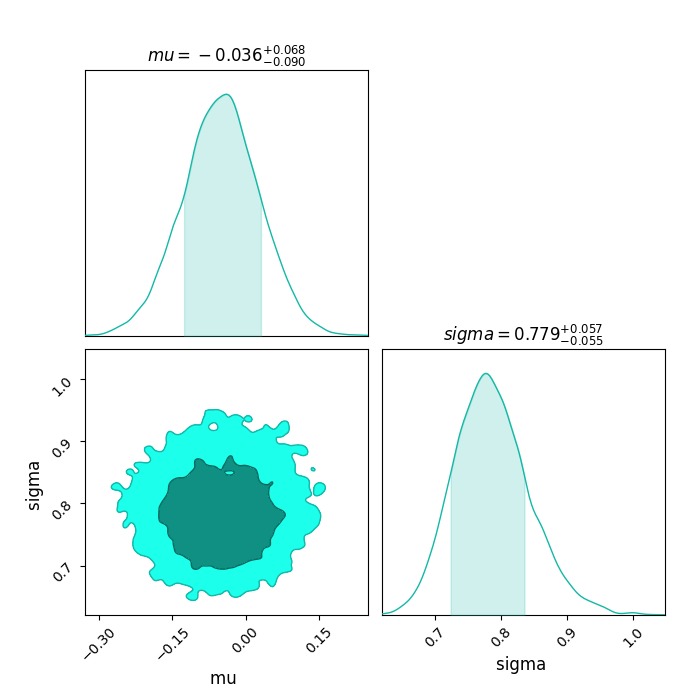
Arviz¶
To simplify the process, we're going to make our arviz sample from the numpyro one.
arviz_id = az.from_numpyro(mcmc)
chain = Chain.from_arviz(arviz_id, "arviz chain", color="amber")
fig = ChainConsumer().add_chain(chain).plotter.plot()
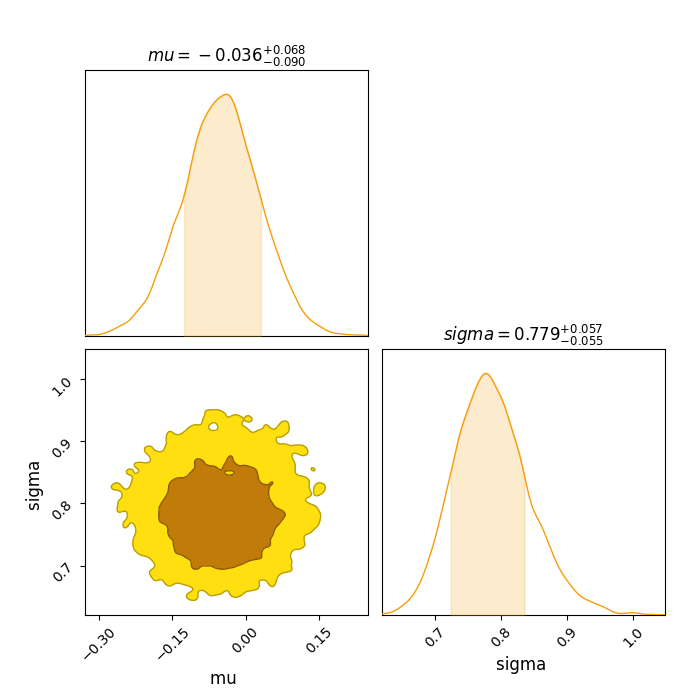
Total running time of the script: ( 0 minutes 20.597 seconds)
Download Python source code: plot_5_emcee_arviz_numpyro.py